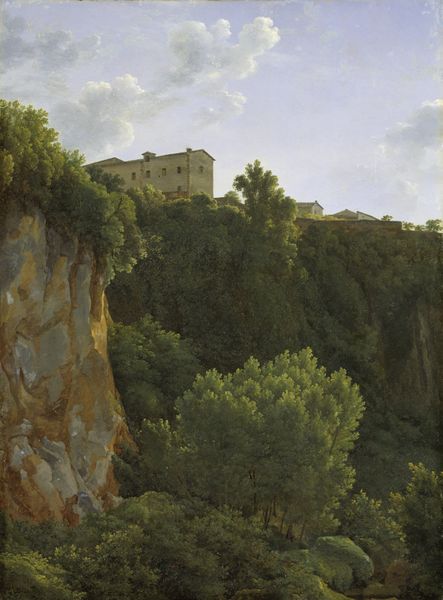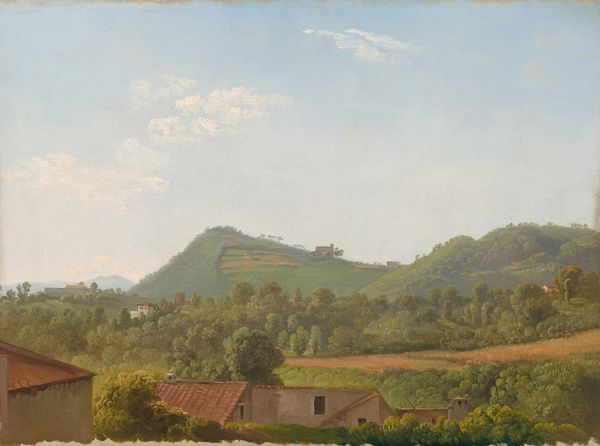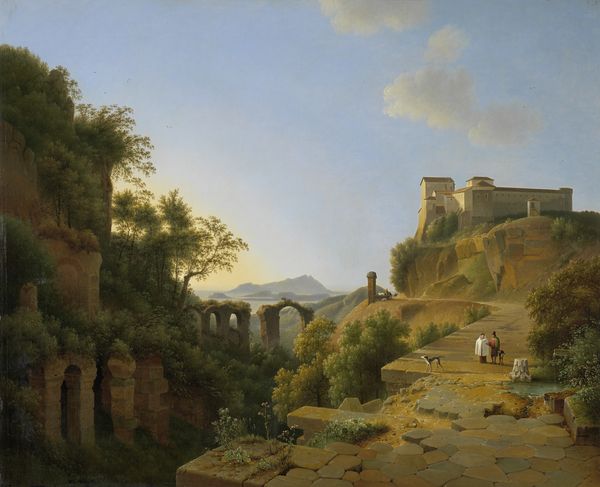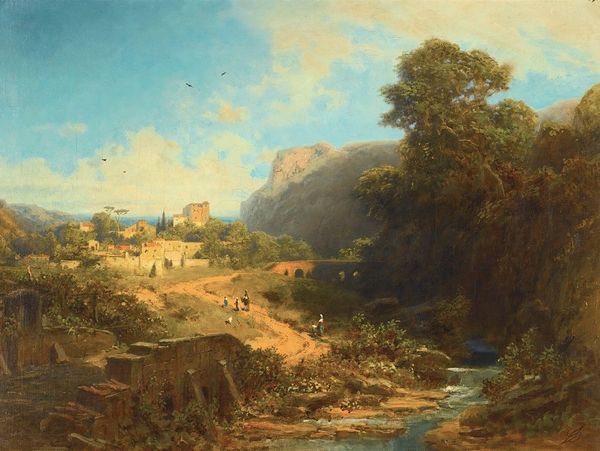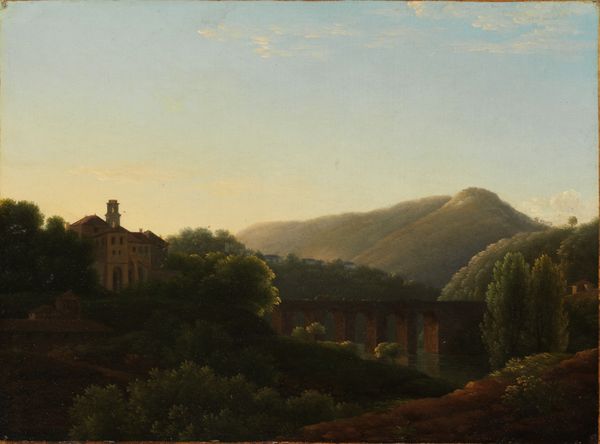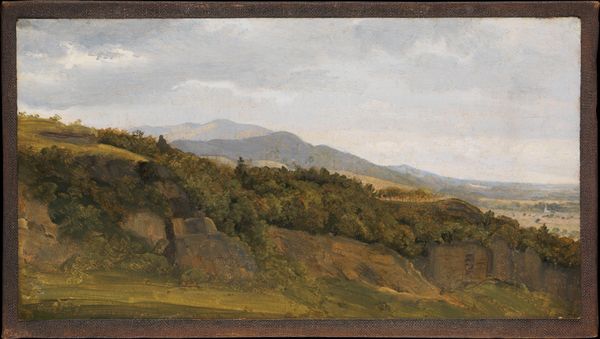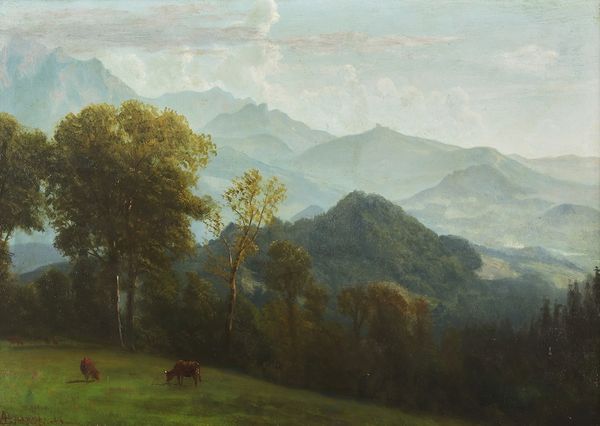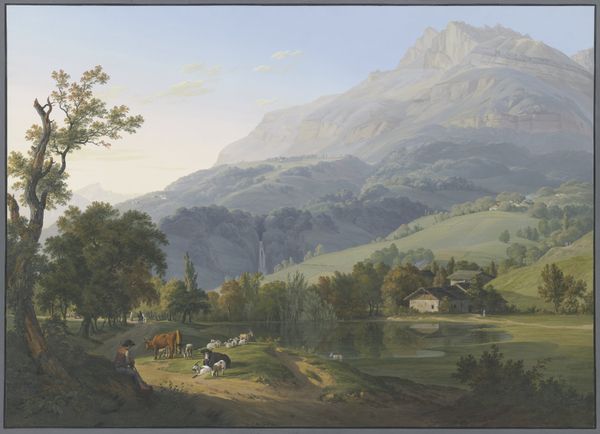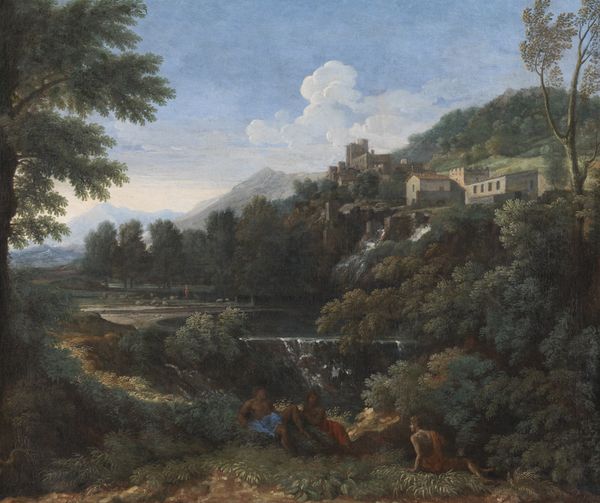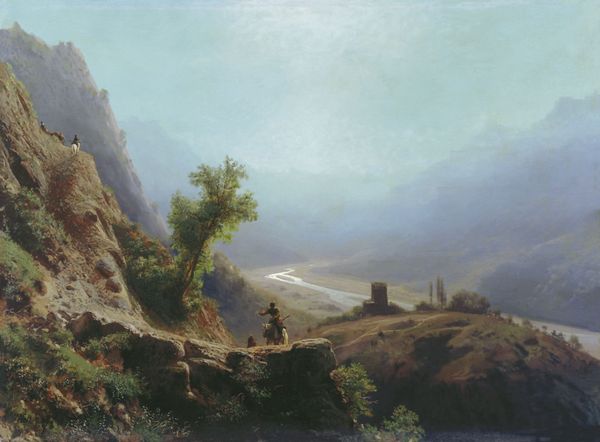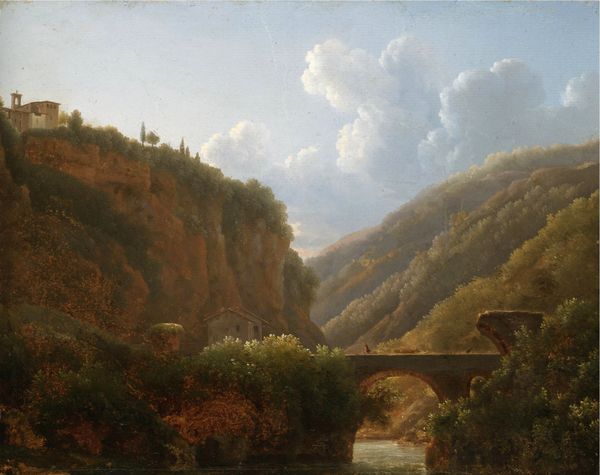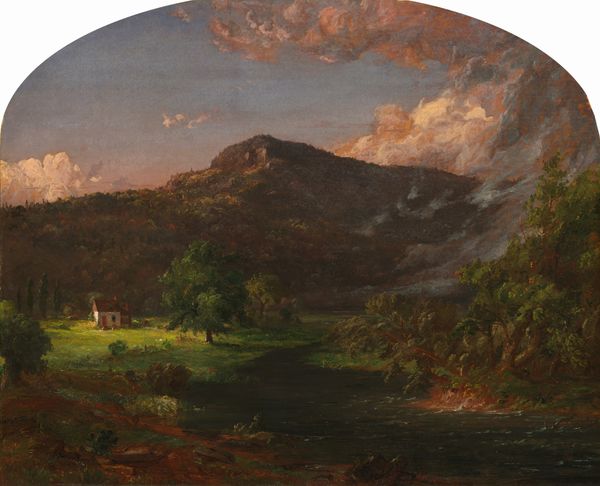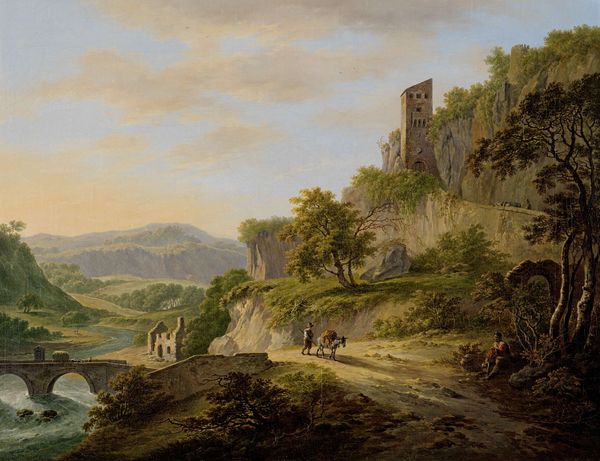
painting, oil-paint
#
neoclacissism
#
painting
#
oil-paint
#
landscape
#
oil painting
#
romanticism
#
picturesque
#
history-painting
#
academic-art
#
realism
Copyright: Public domain
Editor: So, this is "A View of the Monastery of San Cosimato, to the North of Rome" by Jean-Joseph-Xavier Bidauld, and I’m really struck by the almost photographic realism, particularly in the foliage and the way the light filters through. What story does this landscape tell you? Curator: It’s a captivating work, isn't it? Beyond the surface realism, it’s interesting to consider this painting in the context of the picturesque movement and the rise of Neoclassicism. Artists, and particularly their patrons, were beginning to think of the countryside as the stage for virtue and moral uplift. Does this vision of the monastery resonate with ideals of Romanticism or civic virtue? Editor: Civic virtue? I guess the natural harmony suggests a sort of societal order? Curator: Precisely. Consider also how landscape paintings became incredibly popular as ways of fostering a sense of national pride. Imagine influential patrons acquiring works like this: it implicitly links the glory of Rome's past with its present natural beauty, suggesting continuity and enduring power. How do you think the public might have interpreted this view of the Roman countryside? Editor: It almost makes it seem like a timeless scene, emphasizing tradition. Though I didn't initially think about the political angle. Curator: Indeed. Landscape painting often served as a tool to create and promote particular ideologies about the nation. Seeing this painting displayed, audiences could consider the landscape's place within a wider context of cultural and political narratives, or consider this painting a kind of statement. Editor: I had never considered landscapes this way! This makes me think more critically about art's intended audience. Curator: Absolutely. Art is almost never made in a vacuum, which makes it essential to delve into the cultural circumstances that formed it.
Comments
No comments
Be the first to comment and join the conversation on the ultimate creative platform.
